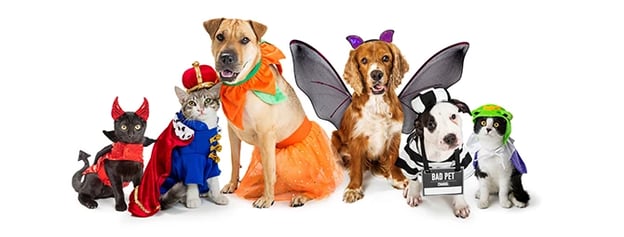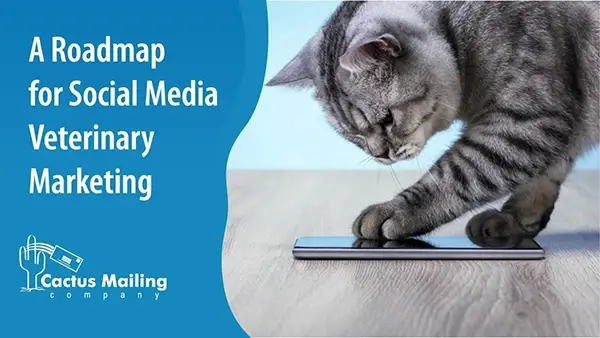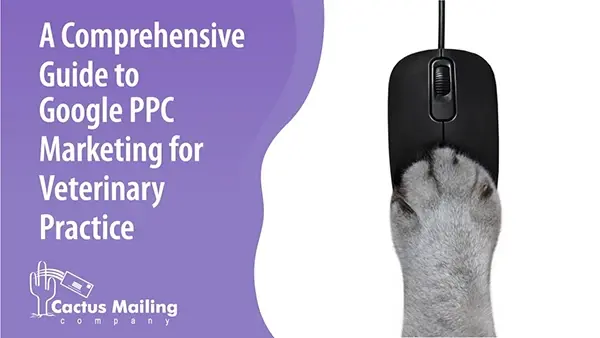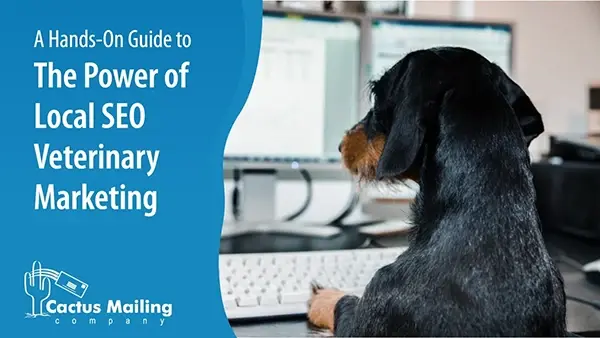We Are Here to Help!
What to Expect from Us:
No Pressure, Just Service!
Get no obligation pricing details and strategies that will work for your business.
For your business to thrive today, you need to have a solid social media presence. Several social media apps have emerged as the go-to platforms for business owners and laypeople alike. Facebook, Instagram, Twitter, and TikTok are the most used social media apps today. That means clinics now have the potential to reach out to more people when it comes to marketing their business. Given that many pet owners turn to social media to find and choose veterinary services, having a good online presence can be instrumental in your clinic's growth. For any veterinary practice, once you build a following in any of the platforms we discuss below, you can expect a steady influx of inquiries to your clinic.
Social Media Presence: Choosing Platforms, Crafting Content, and Carving Strategy
Navigating the realm of social media can be overwhelming, particularly for a specialized field such as veterinary medicine. Nevertheless, adopting the correct strategy can significantly transform your practice. Here are practical measures to assist veterinary professionals in maximizing the potential of social media.

Selecting the Right Social Media Marketing Strategy
The best platform for a veterinary practice largely depends on the target audience and the kind of content you want to put out for your marketing strategy. Begin by understanding where a potential pet owner would want to spend their time. Then, tailor your social media content to that specific platform and followers.
To help you decide, here's a summary of the different platforms, their audience, and suggested content type:
|
Platform |
Audience |
Recommended Content |
|
|
All age groups, particularly popular for adults aged 25-65 |
Informative articles, success stories, event announcements, live Q&A sessions, photo albums, community/group creation. |
|
|
Adults aged 18-40 |
Visual content: photos, "reels" (short videos), behind-the-scenes clips, pet portraits, quick pet care tips, time-sensitive announcements. |
|
|
Broad age range, 18-50 |
Quick updates, pet-related news, engaging with pet influencers, short video clips, brief tips, trending conversations. |
|
YouTube |
Wide-ranging demographics |
Longer-form video content: educational series on pet care, demonstrations, detailed patient recovery stories. |
|
|
Professionals in the field |
Formal and professional content: industry news, clinic achievements, networking with other professionals. |
|
TikTok |
Younger users aged 16-30 |
Short, engaging videos: fun snippets, challenges, heartwarming moments with pet owners in the clinic. |
|
|
Adults aged 25-45, skewed female |
Visually appealing content: infographics, tips, photo boards, pet care hacks, nutrition charts, DIY pet projects. |

While Facebook and Instagram are almost universally effective due to their vast user base and versatile content options, platforms like TikTok are more popular with a younger audience and focusing on this platform alone may have a better ROI in the long run. Think about the goal of your veterinary social media marketing before deciding which platform to use.
Remember, don’t spread yourself too thin! Choose one or two platforms to start a social media account with, and as you get comfortable, consider expanding your reach.
Engaging Social Media Content: From Visuals to Storytelling
It's important to note that not all pet owners would like their pets to be featured on social media so make sure to ask the pet parent if they're comfortable with you posting their furry friend. It's also best to get explicit consent from a new client and also current clients before taking photos or videos of their pets.

Visual storytelling
Photos and videos of pets are not only memorable but also shareable. There are numerous ways for veterinary professionals to visually tell stories. Below are some specific examples of social media content that you can post on the different platforms:
- Instagram: You can share a carousel post of a dog's "Before & After" treatment. You can also include some funny photos or stories that are accompanied by a descriptive caption.
- Facebook: A photo album titled "A Day at [Your Clinic's Name]", showcasing candid shots of pets during their visits, the clinic's facilities, and the staff interacting with animals.
- Twitter: A GIF of a playful kitten after surgery with the caption: "All Healed and Ready to Play!". A sample tweet might read like: "Look who's back on their paws after a successful surgery! 🐱💃 #HappyKitty #VetLife"
- YouTube: For this video-centric platform, you can film some behind-the-scenes of your clinic's procedures or film yourself talking to a client about proper pet care.
- TikTok: Come up with a short clip of a puppy's first visit to the clinic, with trending music in the background and a straightforward caption describing their first check-up.
- Pinterest: A board titled "Pet Recovery Transformations" with pins of before-and-after photos of treated pets.
- LinkedIn: This platform requires professional posts. You can show the clinic's state-of-the-art imaging equipment in a photo with a more descriptive and formal caption.

Educate with Content
One of the better-performing types of content is educating your audience. As veterinary professionals, the most logical content to post is to offer valuable insights about veterinary medicine. This can range from articles about pet nutrition to infographics about common illnesses or short videos explaining procedures. Other informative content can include:
- For pet families
- - Resources: Recommend books, podcasts, and websites for pet owners.
- - Pet care tips: Provide valuable advice on pet care and health.
- - Educational infographics: Create visually appealing infographics about pet health topics.
- - Training tips: Offer bite-sized training advice one social media post at a time.
- - How to prepare your pet: Share tips on preparing pets for vet visits.
- - Breed spotlights: Educate followers about the unique characteristics of different pet breeds.
- - Pet Safety Tips: Share a series of safety tips, such as how to pet-proof a home, prevent common accidents, or ensure pets are safe during holidays like Halloween or Fourth of July.
- - Pet Product Reviews: Share your expert opinions on various pet products, such as toys, grooming tools, or dietary supplements.

- About your veterinary clinic
- - Important practice information: Share updates on vet clinic hours, closures, or renovations.
- - Special offers: Inform of promotions, pet food or other services, that existing clients might be interested in.
- - New equipment: Showcase new equipment in your veterinary hospital and explain how it benefits patients.
- - Case of the week: Share interesting clinical cases to give followers a glimpse into veterinary practice.
- - Staff and specialists: Introduce your veterinary team members. Feel free to spotlight a veterinarian, acknowledge staff contributions, or commend members for achievements.
Pro tip: For longer articles, share a teaser and provide a link that will direct your followers to read the full content on your veterinary website.
Share Success Stories
Everyone loves a heartwarming story. Plan your content marketing around sharing anecdotes of challenging cases, emphasizing the journey, the treatment, and the happy outcome. Different social media site offers unique ways to share the inspiring narratives of pet recovery journeys.
One marketing idea you can implement is crafting video montages, complete with behind-the-scenes treatment footage, to illustrate the remarkable transformations that animals undergo. These montages, whether on Instagram, TikTok, or YouTube, provide a visual journey that captures the essence of resilience. Meanwhile, platforms like Facebook and Twitter offer opportunities for more detailed accounts, where each post or tweet acts as a chapter in the story of a pet's successful recovery.
The medium may vary, but the message and reputation management remain consistent: the celebration of the indomitable spirit of animals and the dedicated efforts of the veterinary service team who facilitated their recovery.
Engage with Your Audience
Engagement isn't just about posting; it's about fostering a two-way conversation. We've come up with several suggestions to encourage interaction with existing and potential clients. With the right content, your veterinary care social media platform can even get engagement from those who do not have pets yet. Get ready to populate your social media marketing with interactive and fun content!
Just for fun:
- Animal trivia: Share interesting facts and trivia about different pets and animals.
- Pet memes: Post pet-related memes and humorous content to get your followers to react or share your post.
- Pet costumes: Share holiday-themed pet costumes or get pet owners to share theirs.


Challenges:
- Guess the breed posts: Post pictures of pets and engage followers by encouraging them to guess the breed.
- Animal quiz: Let them guess the animal by giving certain facts or traits.
- Pet art or craft challenge: Challenge followers to create pet-related art, crafts, or DIY projects. Ask them to share their creations on your social media and feature the most impressive ones.
- Pet of the month: Hold a monthly contest where followers can submit photos of their pets, along with a brief story about why their pet should be featured as the "Pet of the Month." Allow your audience to vote for their favorite entries.
Community:
- Pet adoption: Find loving homes to animals in need, offering them a second chance at a happy and fulfilling life.
- Lost and found pets: Help reunite lost pets with their owners by sharing information.
- Community events: Promote local events your clinic is involved in.
- Awareness days: Celebrate animal-related awareness days on social media.
- Lookalikes: Share amusing resemblances between pets and their owners or staff members.
- Dog walk recommendations: Share your favorite dog-friendly spots and ask for recommendations.
- Pet owner board: A post where users can comment and share their own pet stories or questions.
- Create a poll: Engage followers with fun or informative polls.
- Ask the Vet: Invite followers to submit their pet-related questions or dilemmas. Choose a question to answer each week or month, providing valuable advice and insights.
- Ask a question: Initiate conversations with followers by asking open-ended questions.
Tip: For better engagement, include a CTAs (calls-to-action) on your social media post. Some CTAs you can use are 'Follow us for more', ‘Share this with a friend,’ ‘Join the challenge,’ or ‘Read full text (link to your website).’
Veterinary social media posts success hinges on consistency and engagement. Active presence, regular updates, educational content, and engagement foster trust and community. It also showcases expertise and care, reinforcing brand image.
Pet services can leverage Loomly, a social media management platform, to enhance online presence and engage with audiences effectively. A social media management platform can help with various aspects such as content planning and scheduling, content reaction, audience targeting, and optimization. Loomly even offers analytics and a seamless way to interact with followers.
Building a Digital Marketing Strategy
Set Clear Goals
What do you aim to achieve? Whether it's increased brand awareness, driving appointments, or positioning your clinic as a trusted resource for pet owners, your goals will guide your strategy.
Develop a Content Calendar
Plan ahead. A content calendar helps you organize posts, ensuring you have a mix of content types and topics. This also makes it easier to incorporate seasonal topics like flea prevention in the summer or holiday pet safety.

Monitor and Adjust
Use analytics tools provided by social media platforms to see which posts your audience prefers and at what times they're most active. This data is invaluable for refining your strategy.
Stay Updated
The digital world evolves rapidly. Be on the lookout for new features or tools on social platforms. For instance, if a platform introduces a new video feature or a way to host webinars, think about how you can leverage that for your practice.
Invest in Training
Consider short courses or workshops on digital marketing. Even if you delegate the social media responsibility to a staff member, having a foundational understanding will enable better decision-making.
Optimize Your Social Media Channel
A robust online presence is vital for veterinary clinics and there are other ways to maximize your online presence. First, Search Engine Optimization (SEO) ensures discoverability, helping clinics rank higher in search results when pet owners seek their services. Optimized websites with relevant keywords enhance visibility, providing potential clients with easier access to information. Improved user experience through veterinary SEO can lead to higher conversions and better patient care. Local SEO is especially critical for veterinary clinics, catering to a predominantly local clientele. By incorporating location-specific keywords and creating community-oriented content, clinics attract nearby pet owners actively seeking their services. Keyword-rich content not only boosts search rankings but also establishes clinics as authoritative sources.
Next, you can also supplement your veterinary marketing strategy with email marketing. This empowers veterinary clinics to cultivate deeper client relationships through personalized communication. It delivers updates, appointment reminders, and educational content directly to pet owners' inboxes, enhancing trust and loyalty. This fosters improved pet healthcare and enduring client relationships.
Lastly, online reviews hold significant sway over a clinic's reputation. Veterinary clinics must actively manage both positive and negative feedback, showcasing a commitment to client satisfaction and continuous improvement. Reputation management involves engaging with reviews, addressing concerns, and expressing gratitude for positive feedback. This strengthens the clinic's online reputation, attracting more pet owners. Take into consideration the reviews as they offer valuable insights for refining patient care and service quality, further enhancing the clinic's community standing.

Conclusion
A veterinary clinic's success is deeply intertwined with its online presence, especially on social media platforms. With pet owners extensively using social media to seek and select veterinary services, it becomes imperative for clinics to strategically leverage these platforms. Your social media management should include selecting the right platform based on the target audience and content type, crafting engaging and informative content, and maintaining consistent interaction with followers can significantly boost a clinic's visibility and clientele. Moreover, diving deeper into digital strategies, including SEO, email marketing, and managing online reviews, further solidifies a clinic's position in the digital landscape. Through these approaches, veterinary professionals can not only reach wider audiences but also foster trust, community, and brand loyalty.
Our postcards have helped various businesses get leads, boost awareness, and grow revenue. Let us help you create a pet services postcard design that can achieve your marketing goals!

 Cactus Mail Team: Feb 02, 2024
Cactus Mail Team: Feb 02, 2024



